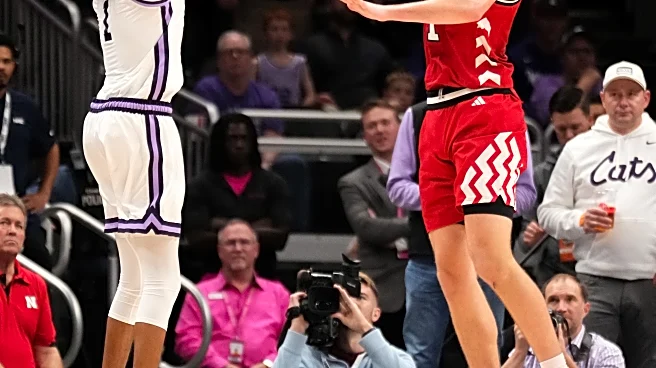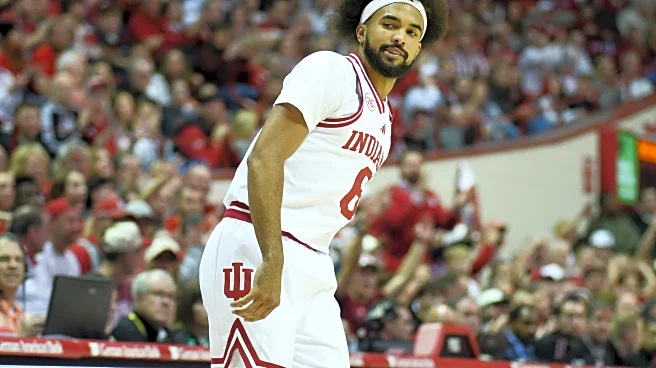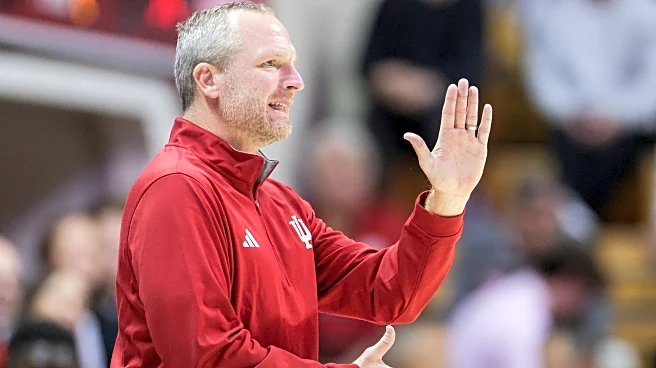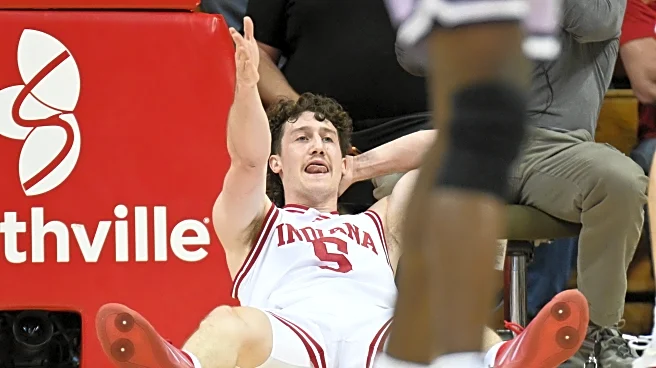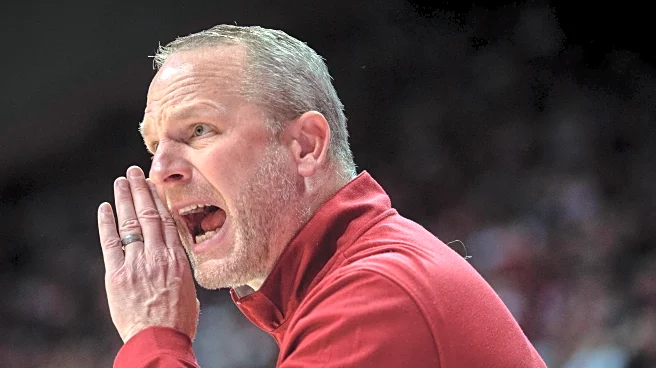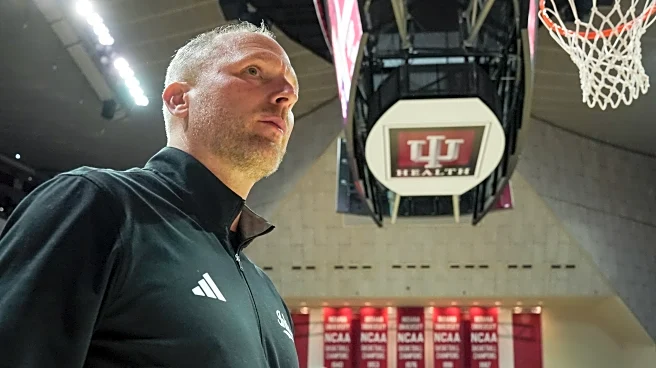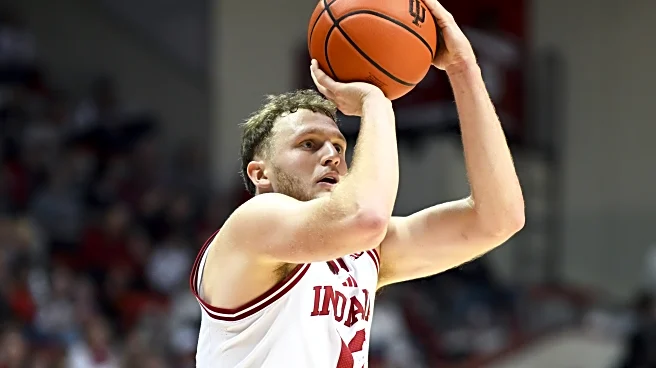The Kansas State Wildcats came to historic Assembly Hall hoping to get back on the winning track against Indiana. Instead, they started slowly, recovered, then fell back again, losing 86-69.
The final score
does not fully indicate how badly the Wildcats (5-2) were outclassed by the Hoosiers (6-0) through much of the game, nor how close K-State made it after falling behind 20-4 in the first 6:30.
The final was actually worse than the numbers suggest. The Cats, who entered averaging 92.8 points per game, only scored 4 points through the first 9:32 of playing time. Neither team scored for three minutes after Indiana grabbed its 16-point advantage. Keyed by a Nate Johnson 3-pointer, K-State staged an 18-2 run to pull within 2 at 24-22. Game on, right?
Not so much. After the teams traded a few buckets, Indiana finished the half on a 13-3 run to lead 39-27 at the break.
Halftime adjustments, if any were evident, did not help. Less than four minutes into the second half the Hoosier lead ballooned to 51-31. The Cats had one more run in them, cutting the deficit to 10 (67-57) with 8:51 remaining. But empty trips, turnovers, and non-existent defense let the occupants of Assembly Hall assemble a 23-point lead with 2 minutes to play, after which they were content to relax and wait for the buzzer.
The Hoosiers’ game plan was simple and effective: On defense, hound PJ Haggerty into an inefficient night and chase around the perimeter to prevent open 3-point looks. On offense, loosen things up with the deep ball and drive around half-hearted or completely absent defenders in the lane for easy shots or fouls.
The defensive strategy worked. Haggerty scored 16, but on an uncharacteristically inefficient 7-17 shooting performance in which he only got to the free throw line (where he normally lives) three times. He also committed 6 turnovers, which is perhaps becoming a bit too characteristic. The Cats made 8 of 20 three-point attempts, but two of those came on their last two possessions, when Indiana did not really care.
The offensive strategy worked because it has worked for literally everyone the Cats have played, even going back to the exhibition game against Newman. K-State’s dribble-drive defense was exceedingly poor, allowing Indiana 18 layups and three dunks. Indiana made 10-33 three-point attempts. That they only made 10 is more an indictment of the Hoosiers’ shooting than a compliment to K-State’s defense. They would not have hoisted 33 attempts if the shots were contested.
Indiana also shot 29 free throws to K-State’s 15, and they outscored the Cats 22-13 at the stripe.
CJ Jones (15) and Nate Johnson (13) joined Haggerty in double figures. Elias Rapieque deserves special mention. He scored 9 on 4-6 shooting, tied Johnson for team lead in rebounds with 5, and fueled the K-State run with aggressive defensive effort that, for a time, was infectious. Foul trouble limited him to 22 minutes, however.
Four Hoosiers scored in double digits, led by Reed Baily, who made only 4 field goals and posted 13 of his 21 points from the free throw line.
Three in the Key (plus a rant)
- This is what it looks like when teams take away Haggerty and defend the arc. Not every team will be able to do it, but any coach would be a fool not to Key on PJ. He has been excellent individually, and until tonight he had made his teammates better. Hats off to Indiana. A “bad” night for Haggerty is 17 points, 3 rebounds, and 2 assists. He will recover, no doubt. He was Big XII and national Player of the Week for a reason.
- Scoring alone is not enough. Especially when you don’t score. The four K-State guards—Haggerty, Johnson, Abdi Bashir Jr., and David Castillo—have played an outsize role in K-State’s early season scoring prowess. Tonight they faced against sticky, physical defenders and took too long to adjust. Bashir got very little opportunity, playing only 14 minutes. Likely, the coaches saw what we did. Abdi could not get free for his shot, and he could not stay in front of his man consistently on defense. He is certainly not alone in that failure; but other guys, such as CJ Jones, gave K-State a better chance to both score and prevent scoring in this game than the 3-point specialist.
- It sounds like a broken record, but we’re going to drag the needle across it again. The defense simply must get better. Communication problems and lack of situational awareness are evident when defenders get lost on screens and allow cutters free access down the center of the lane. This happens with embarrassing regularity. Only in short stretches has K-State’s defense made it hard for other teams to do what they want to do. Isn’t that the job of the defense? At the moment, nobody should be convinced that 69 points will be enough for the Cats to win against anyone.
- Exacerbation addition: For a team that wants to run—that is at its spectacular best in the open floor—it is surprising how little effort K-State seems to invest in aggressively pressuring the perimeter, denying passing lanes, attacking the defensive glass, and triggering the fastbreak. Indiana committed 17 turnovers, but most of them must have been travels, passes out of bounds, or dribbles doinked off their own toes, because K-State managed only 11 fastbreak points. The future would look brighter if the Wildcats pressured away from the basket, forced contested passes, and turned aggressive defense into instant offense. We’ve seen it in spurts. It needs to become the norm.
